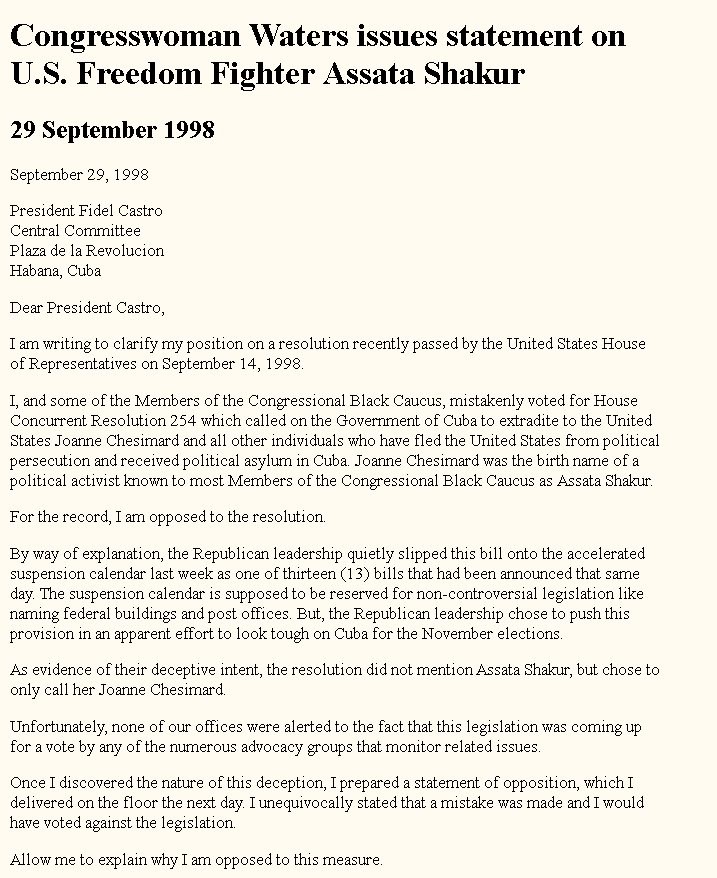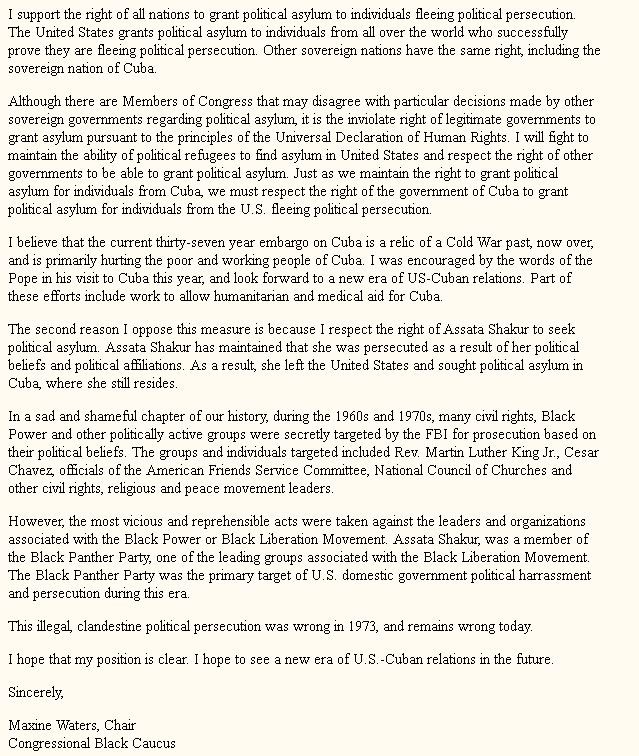The Federalist Papers reports that Imran Awan, ringleader of the group that includes his brothers Abid and Jamal, has provided IT services since 2005 for Florida Democrat Rep. Debbie Wasserman Schultz, the former Democratic National Committee (DNC) chairwoman. The brothers are from Pakistan. The Daily Caller reports that Jamal handled IT for Rep. Joaquin Castro, a Texas Democrat who serves on both the intelligence and foreign affairs panels.
“As of 2/2, his employment with our office has been terminated,” Castro spokeswoman Erin Hatch told TheDCNF Friday.
Jamal also worked for Louisiana Democrat Rep. Cedric Richmond, who is on the Committee on Homeland Security.
Imran worked for Reps. Andre Carson, an Indiana Democrat, and Jackie Speier, a California Democrat. Both are members of the intelligence committee, and their spokesmen did not respond to TheDCNF’s requests for comment. Imran also worked for the House office of Wasserman Schultz.
Then-Rep. Tammy Duckworth, an Illinois Democrat, employed Abid for IT work in 2016. She was a member of House committees dealing with the armed services, oversight, and Benghazi. Duckworth was elected to the Senate in November, 2016. Abid has a prior criminal record and a bankruptcy.
Abid also worked for Rep. Lois Frankel, a Florida Democrat who is member of the foreign affairs committee. To actually see all the representatives that shared the salary expense or Imran Awan, go here. Sheesh, seems lots of democrats have some REAL explaining to do.
Imran Awan, a current staffer, earned an estimated salary of $165,130 as a Shared Employee through the most recent House pay period. This was 2.4 times greater than the median for a House staff.
Awan has been employed in Congress since at least Q3 ’09 (employment information is not available prior to ‘Q3 2009 for House staffers and ‘Q3 2011 for Senate staffers, so Awan’s actual start date may be earlier), and has also been a staffer for Rep. Jackie Speier (D-CA14) and Rep. Yvette Clarke (D-NY9).
Congressional Aides in Criminal Probe Owed Money to Hezbollah-Connected Fugitive
Congressional aides suspected of criminally misusing their access to House computer systems owed $100,000 to an Iraqi politician who is wanted by U.S. authorities and has been linked to Hezbollah, the Iranian-backed Middle Eastern terrorist outfit.
Imran Awan and four of his relatives were employed as information technology aides by dozens of House Democrats, including members of the intelligence, foreign affairs, and homeland security committees.
The aides’ administrator-level IT access was terminated earlier this month amid a criminal probe by U.S. Capitol Police of a suspected security breach, including an off-site server housing congressional data.
The Daily Caller News Foundation Investigative Group has reported that while working for Congress, the Pakistani brothers controlled a limited liability corporation called Cars International A, a car dealership with odd finances, which took—and was unable to repay—a $100,000 loan from Dr. Ali Al-Attar.
Philip Giraldi, a former CIA officer, wrote that Al-Attar “was observed in Beirut, Lebanon, conversing with a Hezbollah official” in 2012—shortly after the loan was made. Al-Attar has also been accused of helping provoke the 2003 U.S. invasion of Iraq as a leader of Iraqi dissidents opposed to Saddam Hussein.
After moving to the U.S., Al-Attar made his money practicing medicine in Maryland and Virginia and defrauding Medicare, Medicaid, and insurance companies by billing for nonexistent medical procedures. The FBI raided his offices in 2009 and the Department of Health and Human Services sued his business partner in 2011.
Al-Attar was indicted in March 2012 on separate tax fraud charges after the IRS and FBI found he used multiple bank accounts to hide income. He fled back to Iraq to avoid prison.
“He’s a fugitive. I am not aware of any extradition treaty with Iraq,” Marcia Murphy, spokesman for federal prosecutors in Maryland, told The Daily Caller News Foundation Tuesday. “If or when he returns to the U.S., the prosecution will continue.”
Brothers Imran, Abid, and Jamal Awan, as well as their wives Natalia Sova and Hina Alvi, were all on the congressional payroll.
Not long before the indictment, Pakistani-born Virginia resident Nasir Khattak, who co-owned Cars International A with Abid, still had access to some bank accounts holding Al-Attar’s assets.
Khattak was a realtor, and with Al-Attar’s permission, “acquired the money through adjustments to the accounts that he controlled as the realtor for Al-Attar,” court documents say.
Abid managed the car dealership’s daily operations, even though he was also employed full time running computers for representatives that have included Emanuel Cleaver of Missouri, Tammy Duckworth of Illinois, and Yvette Clarke of New York. But the car dealership was hemorrhaging money. Customers were often shown cars borrowed from a dealership next door.
“It was very bad record-keeping in Cars International … it is close to impossible to make any sense out of all the transactions that happened,” Khattak said in court documents.
The dealership’s finances interwove with the House’s. A car-dealing associate who was owed money by the brothers, Rao Abbas, was placed on the congressional payroll.
Khattak said Cars International A was a “family business” and by 2010 Imran was its primary manager instead of Abid.
Abid filed for personal bankruptcy in 2012 because the dealership was in his name, listing $1 million in liabilities. Bankruptcies are a major security red flag in background checks for employees in sensitive positions.
The loan from Al-Attar was never repaid, leading to a lawsuit over the dealership’s future. Al-Attar claimed the loan default meant the dealership became his, but refused to testify in person, giving power of attorney to someone else to give evidence on his behalf.
Khattak said in court documents that was because “Ali Al-Attar was out of the country as he was involved in politics and the formation of the Iraqi government.” Though he was fugitive, that was also true.
Giraldi, the former CIA officer, wrote in The American Conservative in 2013 that Al-Attar advised President George W. Bush’s key Iraq policy advisers that U.S. forces would be “greeted as liberators.”
“In late 2002 and early 2003, [then-Deputy Secretary of Defense Paul] Wolfowitz regularly met secretly with a group of Iraqi expatriates, consisting mostly of Shias but also including several Sunnis, who resided in the Washington area,” Giraldi wrote. “The Iraqis were headed by one Dr. Ali A. Al-Attar.”
Al-Attar’s prediction was wrong, and his qualifications for making it—supposedly based on what the D.C.-area Iraqis were hearing from relatives—were questionable because, although Al-Attar was born in Iraq, his parents were Iranian.
But the U.S.-backed regime change served Al-Attar well, as in 2003, he told The New York Times that “he was one of four people chosen by Gen. Jay Garner to re-establish the Iraq Ministry of Health, and that he expected to be called to Baghdad next week.”
That stay in Iraq apparently did not last long, as in 2009, his medical license was suspended by Maryland for separate instances of billing patients and insurance companies for unneeded services.
In November 2010, the Maryland State Board of Physicians brought still more charges of “unprofessional conduct in the practice of medicine and failure to cooperate in a lawful investigation.”
Al-Attar’s attorney said the board was a “Trojan horse” for the FBI. The board said Al-Attar’s “failure to cooperate with the board investigation was deliberate, longstanding, and defiant,” and in March 2012 revoked his license.
The Awan brothers worked for members including Andre Carson of Indiana, one of two Muslims in Congress, and a member of the ultra-sensitive intelligence committee.












